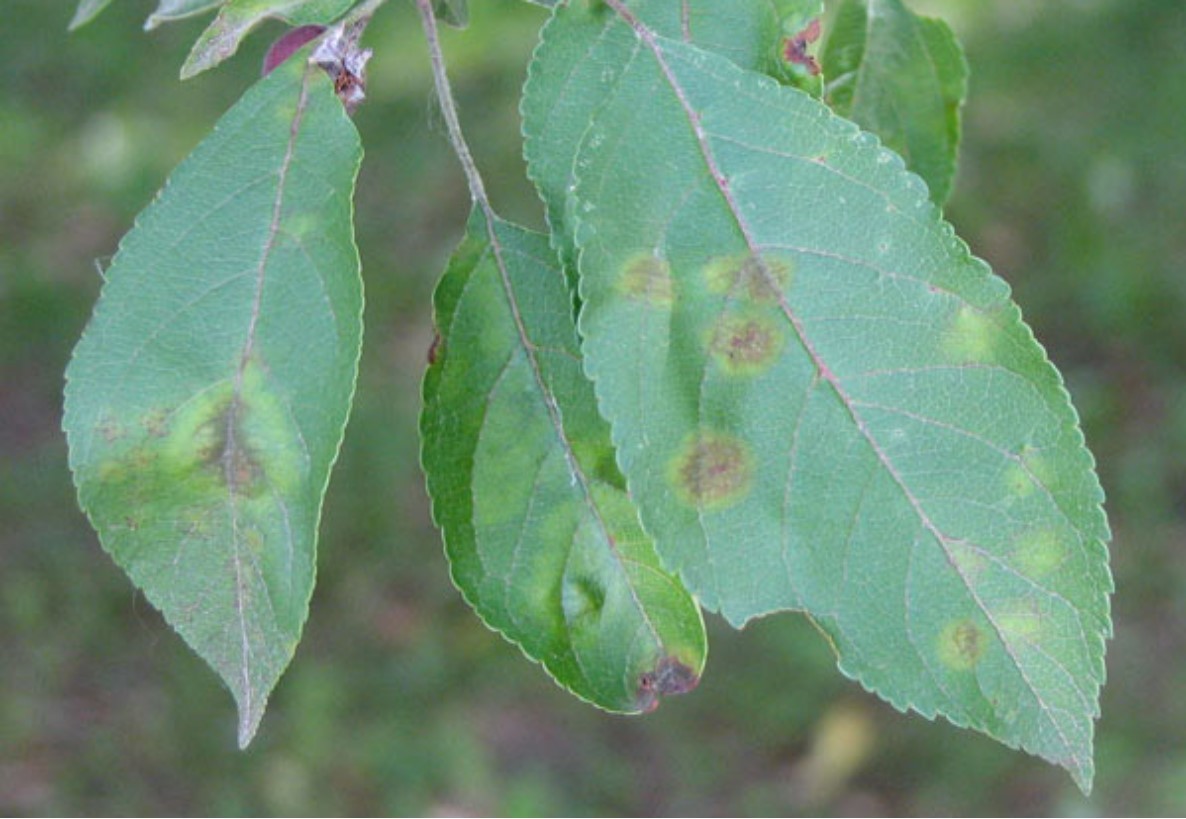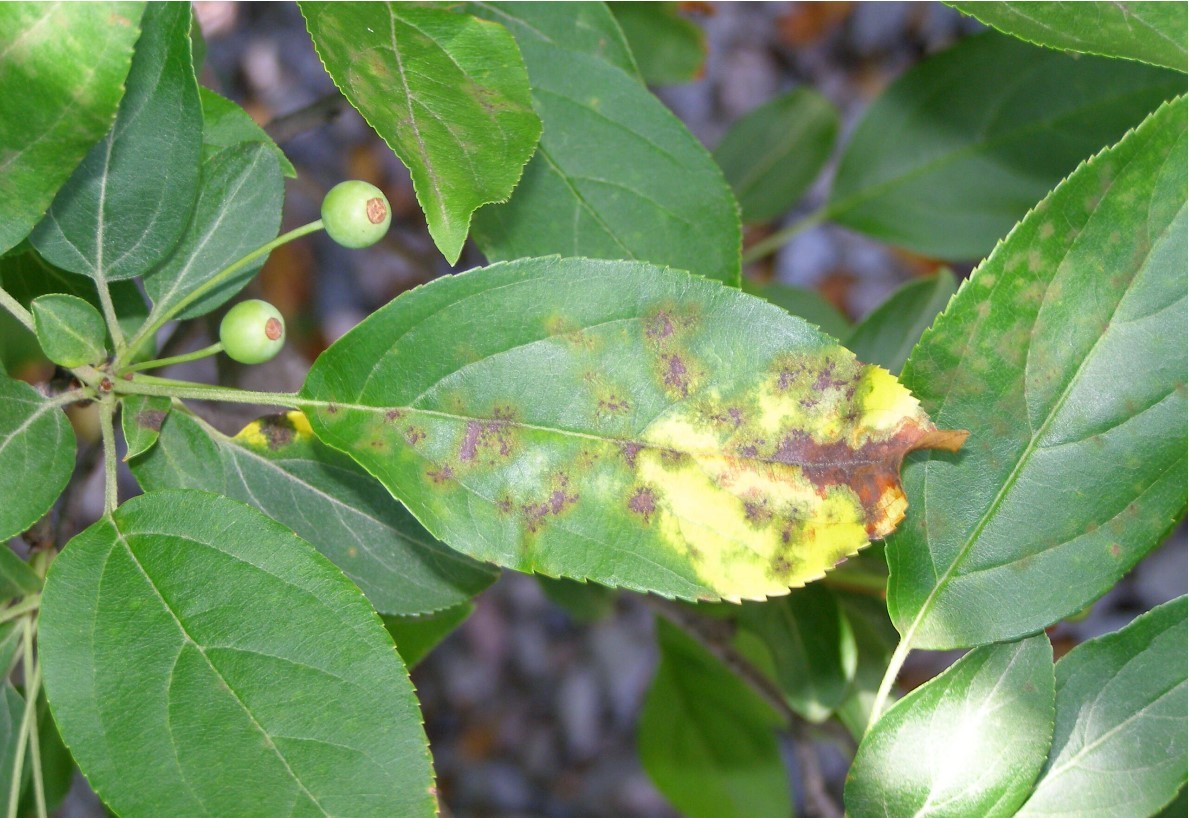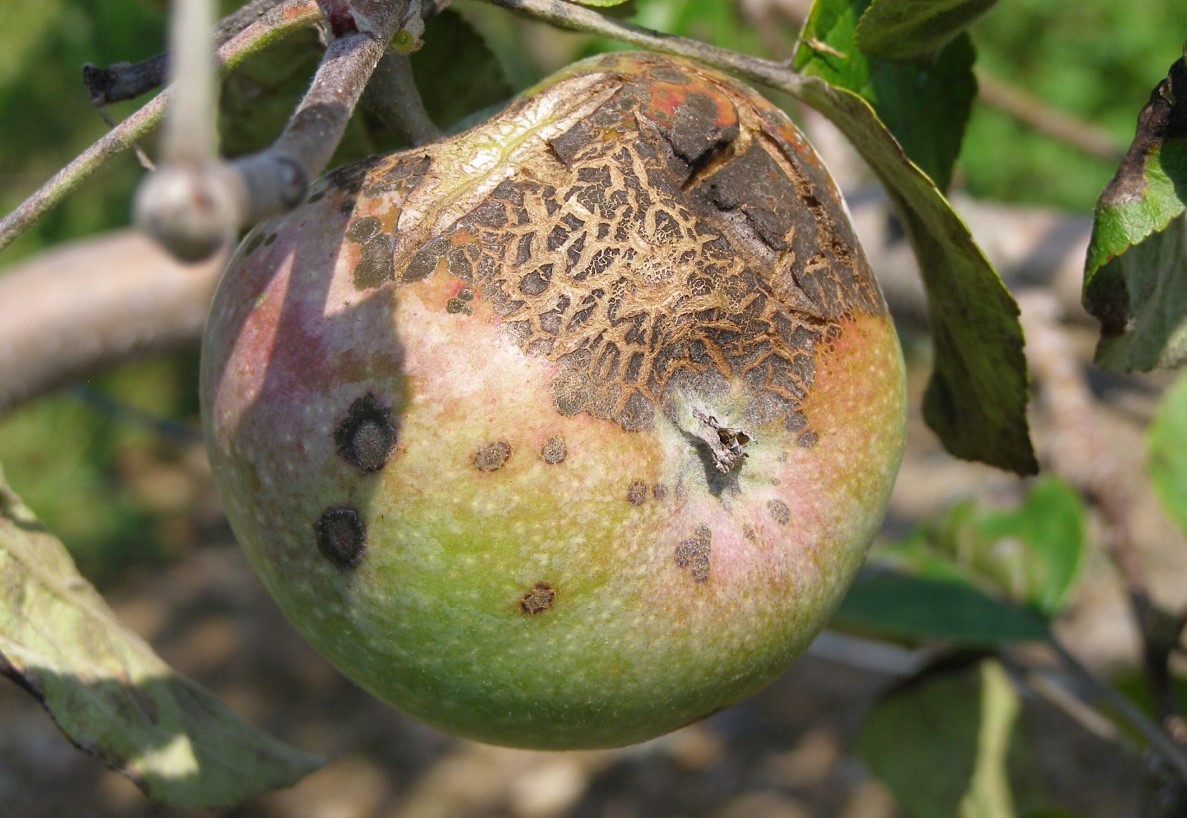Apple scab is caused by the fungus Venturia inaequalis. The disease is common in areas with cool and wet spring weather. It is a serious disease that attacks the leaves and fruit of apples and ornamental crabapples. Infected trees will be weakened, and fruit production will be decreased. Consecutive years of infection would weaken the tree significantly making it vulnerable to other diseases.
The fungus overwinters in the fallen leaves in the soil. Spores are carried by wind, rain or splashing water from the ground to flowers, leaves and fruits.
Scabby apples may still be edible after removing the infected part.
Sign and Symptoms
Infection first appears on the leaves’ lower side and develops on the upper side as it progresses. Young lesions are relatively brown to olive green with indistinct margins. Lesions on older leaves are typically raised, dark green to gray-brown with distinct margins, and cause cupping on the underside of the leaf. Heavily infected leaves will curl, shrivel and fall from the tree.
Infected fruit becomes distorted and may crack allowing entry of secondary organisms. Severely affected fruit may drop, especially when young.
Prevention
Watering & Fertilizing
- Maintain a good vigor of your tree by fertilizing them annually.
- Water in the early morning to allow moisture on leaves to dry out before infection occurs.
Plant Selection
- Select varieties of apple and crabapple that are resistant to apple scab.
Mulching
- Cover the soil with natural mulch to cover the soil and prevent splash dispersal of the fungal spores.
Pruning
- Prune and destroy infected leaves.
Sanitizing
- Remove litter that contain infected leaves
Control - What you need an arborist to do
Pesticide
- Fungicide does not cure infected leaves or fruit but will protect healthy leaves from infection.
- For best control, apply copper fungicide 2 weeks before normally appears.
- After disease appears, apply copper fungicide and repeat 7-10 days intervals up to blossom drop.



Tree Health Issues
Wondering about costs?

